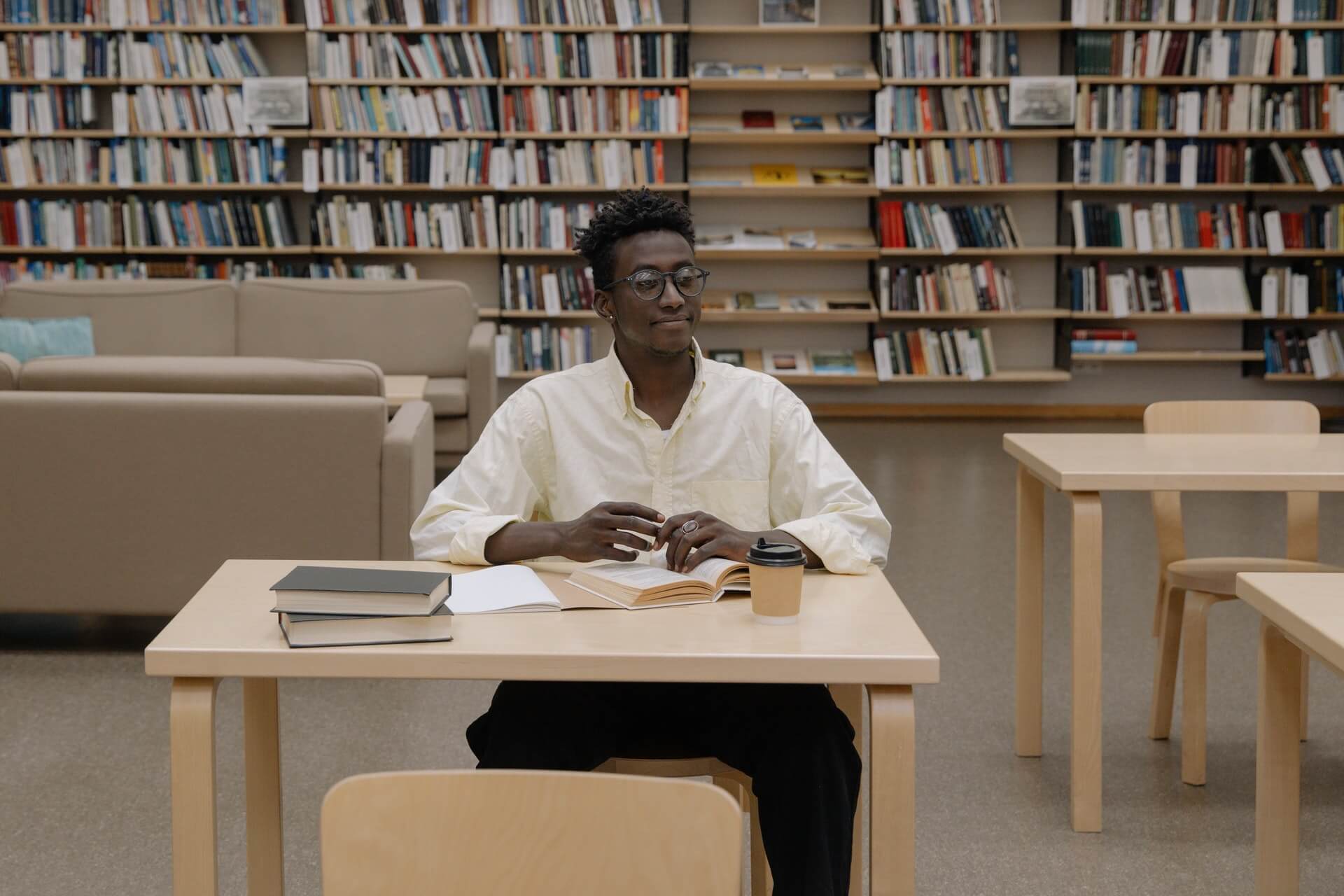It’s no secret that students who are engaged in their learning do better in school. So why is meaningful, engaged learning that captures student attention the exception rather than the standard of American high schools?
Great classrooms, whether in-person or online, are filled with students who are motivated, challenged, and invested in their learning.
Student engagement is a challenge even under the best of circumstances—factor in a global pandemic, the demands of virtual learning, and the return to in person schooling—creating meaningful learning engagements might seem a nearly impossible task. But there are plenty of ways to get students engaged, whether they’re sitting in front of you in a classroom or on a computer screen.
Why Is Student Engagement Important?
Student engagement is defined by “the degree of attention, curiosity, interest, optimism, and passion that students show when they are learning or being taught, which extends to the level of motivation they have to learn and progress in their education.”
Student engagement is critical to student success. As Gallup’s research reveals, students who feel engaged in their learning are 2.5 times more likely to say that they get excellent grades and do well in school, and they are 4.5 times more likely to be hopeful about the future than students who feel disengaged.
How schools define engagement varies from classroom to classroom. Some might judge engagement based on attendance, active listening, participating in discussion, and turning homework in on time. Meanwhile other schools might say the degree to which students are enthusiastic, curious, and motivated to learn reflects overall engagement.
Neither is right or wrong. Rather, they represent the fact that there are several ways to engage students in their learning.

Types of Student Engagement
While student engagement might appear like a straightforward concept, it can actually take several different forms in the classroom, including emotional, behavioral, cognitive, physical, social, and cultural engagement.
Behavioral Engagement
When students show up to class, turn in homework, and participate, that’s behavioral engagement. Oftentimes, students behave their best when educators provide students autonomy by incorporating their ideas and opinions into curricula or by mixing up classroom routines to break up the monotony that can occur when students sit in the same seat, performing similar tasks for extended periods of time.
Cognitive Engagement
Cognitive engagement or intellectual engagement is when students display excitement through their thinking, as evidenced by curiosity and a drive to ask questions and learn more than just what is asked of them. Giving students a say in the subjects they study and a choice in how they demonstrate their knowledge are great ways to encourage cognitive engagement.
Emotional Engagement
Emotional engagement is when students have a positive outlook on their education. Strong student-teacher relationships are an important part of this and teachers can build these caring, trusting relationships by taking into account a student’s social-emotional needs and their life outside of school.
Physical Engagement
Physical engagement isn’t just for gym class. Classroom teachers can also use opportunities to get students up and moving to stimulate learning. For example, in math class students could build a human number line or in English class students could act out a scene from the book they are reading.
Social Engagement
Working in pairs or small groups to work collaboratively on projects or taking part in a friendly academic challenge are great examples of social engagement. After a year or more of remote learning and being isolated from peers, working to rebuild bonds is particularly important to engage students in their learning.
Cultural Engagement
Cultural engagement is when a classroom experience is built to reflect students’ diverse backgrounds. Culturally responsive teaching can engage students by including perspectives from diverse ethnic and cultural groups, making connections to real-world issues, and giving students a voice to make decisions on important social issues and take actions to solve them.
The Challenges to Student Engagement
It’s clear that student engagement is important. Yet step into most American high schools, especially after the pandemic, and you’ll notice something most of them have in common. Students are stressed and bored.
Through Gallup surveys with millions of students from every state, from rural schools to urban, more than half of students say they are bored. Worse, engagement actually starts strong and declines year after year. 74 percent of fifth graders report high engagement, but by high school, only about one-third of students say they are highly engaged.
The challenge is that while parents and policymakers can insist that every child attends school, they cannot guarantee that every child will enjoy school. The problem of engagement has only gotten worse during remote learning, with less compelling content and students feeling more removed from their learning due to the increased reliance on technology.
As student engagement expert and Harvard Graduate School of Education professor Jal Mehta, says, “We have to stop seeing boredom as a frilly side effect. It is a central issue. Engagement is a precondition for learning.”

How to Increase Student Engagement in the Classroom
There are many factors that impact student engagement in the classroom, including creating a supportive community through strong relationships and connecting learning to real-life problems that impact students directly.
But front and center is the belief that student agency and engagement go hand in hand.
Young people have important insights about their own learning and every aspect of their schools. For them to be engaged, they need to make choices. To make this happen, schools need to bring students to the forefront of decision-making—as informed, committed stakeholders.
This will not only enable them to deepen their learning and relationships with trusted adults, it will improve schools and communities. Youth participation builds essential, real-world skills and knowledge with benefits that extend far beyond the classroom.
Here are some ways schools can motivate and empower young people to better engage in their learning.
- Build strong relationships
Emotional engagement is built through strong student-teacher relationships. These relationships play a crucial role in how students respond to the world around them while they figure out how they can make their own impact.
During remote learning, we learned that these relationships were important. But just because students and teachers may be apart doesn’t mean they have to be alone. At Da Vinci RISE High, an XQ school in South Central Los Angeles and Hawthorne, many students are in foster care, on probation, or experiencing homelessness. So educators have to meet their unique needs.
While learning remotely, Da Vinci educators instituted tele-counseling, 1:1’s with mental health teams, and shifted to a therapy-based model aimed at putting the social-emotional needs of students first.
Here are 10 more social emotional learning tips for educators in distance learning. - Make learning a social experience
Research shows that students learn best when they feel a strong sense of community. That’s why social learning experiences are so important.
From beginning every school day by gathering in a circle for the opportunity to cultivate their voice and be seen and heard, to participating in six interdisciplinary group projects over the school year, XQ schools succeed because they are spaces where students form tight-knight connections and make learning a shared experience.
As students from these kinds of innovative high schools can attest, this type of social learning is what makes an XQ school unique.
“I can choose what I’m passionate about, and I don’t have to sit through things that I know that I’m only doing just so I can graduate with my class, or get a good grade,” says Grace, a former student at Iowa BIG. “I can pick and choose, and work with people that I wouldn’t work with on a normal basis from different schools. I think it’s really important to have that experience, that real-world experience of working with people that you’ve never really worked with before. - Give students choice
There are several ways to capture a student’s behavioral engagement, but one of the best is giving them a say in their learning. Through student-centered learning, students not only gain valuable academic skills but they also learn the life skills they will need for success in college and in their careers.
Take students at Purdue Polytechnic High School as an example. All students work to solve a real-world challenge, like how they would feed an estimated 10 billion people in the year 2050. But from there, students become the leaders of their own learning. These students are leaders of their own learning.
Students plan their own research, propose a solution, communicate their ideas to teachers and community members, and evaluate their progress as they go. Teachers help guide the process, but students are in charge of content, timing, and motivation. - Harness the power of project-based learning
Some schools will say they do projects, but having students create a poster at the end of a unit is not project-based learning. Project-based learning (PBL) is about more than just tacking on a product to end a unit. It’s about putting student inquiry and creativity front and center.
PBL is also a strong antidote to the traditional “assembly line” model of instruction where students passively learn through separate subjects in separate classrooms. Instead, PBL can offer students a chance to get out of their seats to work on projects that are relevant, exciting, and interdisciplinary.
Take this project students completed at New Harmony High in New Orleans, LA, where they published their own book of short stories imagining New Orleans in a future devastated by climate change. Through this one project, students learned about environmental science, the culture of their community, and the tools of storytelling, like character development and story arcs. - Connect learning to the real world
Students are more likely to be engaged with their learning when they can see the direct connection between what they are learning and real life. Connecting skills to future careers and learning about content that is relevant can help students feel like what they are doing matters.
At XQ schools, the classroom often extends into the community, where strong relationships can lead to new learning opportunities for students. At Iowa BIG, almost everything students study connects to their home in Cedar Rapids, from partnering with a local nonprofit to address food insecurity, to working with the chamber of commerce to explore the wage gap between highest and lowest paid employees.
Beyond just learning content-based skills, students also gain employability skills through these types of projects. And thanks to these projects, students emerge from high school with strong team building expertise and a professional network that can be invaluable as they enter their careers.
Using Technology to Keeps Students Engaged
Keeping students engaged during COVID-19 and remote learning proved to be an even bigger challenge for educators, but that didn’t mean it was impossible.
Educators found creative uses for technology to modify in-person strategies and continue to build strong relationships, give students choice, and connect learning to the real world.
Here are some ideas we learned from remote learning that show how technology can continue to be a tool for student engagement.

Modifying Engagement Strategies for Remote Learning
- Build community online: Take time to get to know students beyond academics. The loss of unstructured time to chat with students in the hallways or at lunch means that teachers need to be more intentional in creating opportunities for students to share their lives outside of school.
- Provide (virtual) space for social learning: Popular in-person strategies like “Think-Pair-Share” or “Turn and Talk” are great ways for students to share their knowledge in small groups. When you’re online, rather than staring at a sea of muted squares during a class-wide lesson, think about having students form smaller discussion groups in a Zoom breakout room.
- Adapt rather than abandon: Just because you can’t work with community partners in-person doesn’t mean you have to abandon those projects entirely. At Círculos, an XQ school in Santa Ana, California, students and teachers adapted one project into a documentary film, allowing students to continue to address issues they care about while also getting to work with experts virtually.